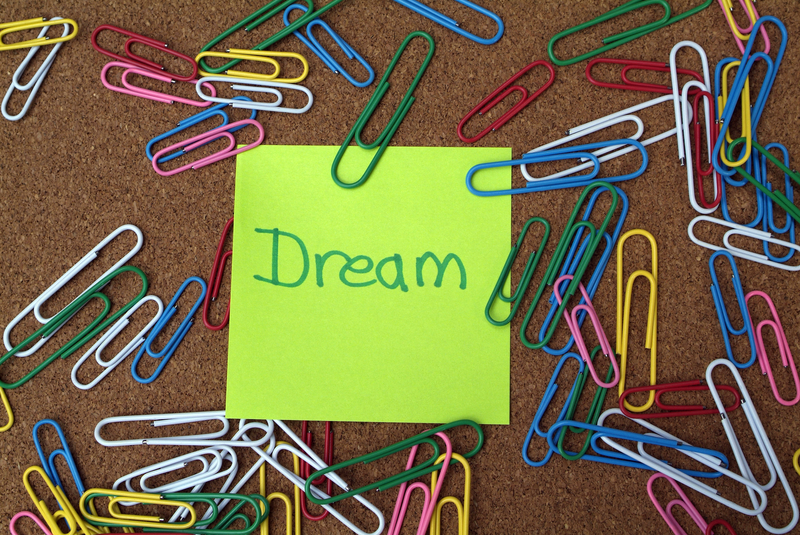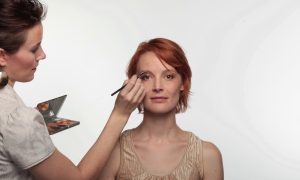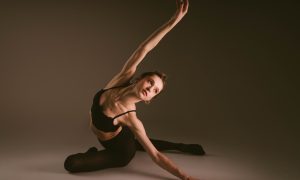Have you ever known you have a big vision, a big dream, but it’s fuzzy? Can you visualize it if you close your eyes, or is it more verbal? Are the steps to get there in mind as well, or are they absent? As a dance lover, for you that might include big stages, beautiful costumes, your name in a Playbill, maybe even in lights. There’s also perhaps a ballet barre or tap shoes, your favorite leg warmers or comfy worn-out leggings – the little things that are part of those special everyday moments.
These things are all tactile, visual and concrete, although also with deeper mental and emotional significance. Dancers are also most often highly tactile, visual and concrete people. Technique is all those things, and, even with more nuanced and multifaceted choreographic creations, we largely see images as working or not working.
Creative Arts Therapies operate under a belief that putting complex thoughts and emotions into something with these qualities – visual, tactile and concrete – can help make them more understandable, and from that something we can act upon.
Consequently, these techniques might be perfect for dancers! They’re not only for those with diagnosable socio-emotional disorders or difficulties (although used effectively with such populations); they can spur growth, increased self-awareness and clarity of purpose for anyone and everyone.
An easy one to try – that anyone can do in groups or alone, with no therapist or other creative facilitator needed – is to create a vision board. Many people, from corporate executives to rock musicians, are building vision boards to create a depiction of their goals and dreams, and through that often find themselves stepping closer to them. Skeptical? Thinking “How can putting pictures on a board get me into my dream company?”
The key is what happens in your subconscious; by committing to a dream by laying it out in a visual image, you may just find yourself daring to take the steps to get closer to it. It can also be powerful to place your vision board somewhere where you see it every day – a reminder of what you strive to achieve, and inspiration to keep working for it every day. “What we focus on expands,” explains Elizabeth Rider in HuffPost. Such focus can come through the visualization resulting from seeing our dreams before our eyes, day after day, she explains. Ready to make your dance vision board? Read on for how!
***What you’ll need: corkboard or posterboard (at art stores, the latter even at stores like CVS, Walgreens and Duane Reade), a sturdy pair of scissors, magazines or other materials with dance and movement-related images (which you feel comfortable cutting up), rubber cement or gluesticks (rubber cement tends to dry more evenly and neatly); optional – small meaningful tokens (such as a rhinestone earring you’ve worn at a memorable competition, or a tap that’s fallen off its shoe), other art supplies (for adding other color and texture, if desired).
1. Reflection.
When possible, close your eyes and breathe deeply. Call to mind what about, and what within, dancing is most meaningful to you. This might relate to other areas of life or other passions, such as connections with friends or causes that are important to you. Then ask yourself where you’d like to end up within these considerations.
If performing is where it is for you, maybe your vision is to dance professionally full-time. If you’re passionate about leadership and management, maybe starting a dance company is where your vision lies. If your heart lies in giving back through a particular cause, maybe an arts non-profit is your vision. You could journal this out. You could let it marinate in your mind for a few days, or even weeks. When your vision has truly begun to crystallize (yet it doesn’t have to be crystal-clear just yet), you’re ready for the next step.
2. Choose your images.
Sift through your magazines and other gathered materials to find what truly resonates with you, that speaks to your goals, dreams and overall vision. Rider describes how truly meaningful vision boards also connect to how you feel about those visions. Considering your dance dreams, main emotions that come to mind in this regard likely include passion, inspiration, hope and joy.
Yet let what those emotions are be authentic to you. When there might seem like so much that you can add to your vision board, how certain images and objects make you feel can be a good guide for which ones to use. It can be helpful to think back to, or go back to the writing of, the last step – as a guide for choosing the images that truly speak to your goals and dreams.
3. Create it and place it.
Here’s where your rubber cement (or gluestick) and posterboard/corkboard come in. Place the images in a configuration that appeals to you visually (since the goal is also to see it often). On the other hand, let your intuitive creative sense guide how you create it as well. Your other art materials, from pastels to glitter to tissue paper, can enliven your board – visually, texturally, energetically, and more.
Perhaps you focus on vibrant colors. Perhaps you’d like to create something with a three-dimensional look and feeling. Again, perhaps set that purposefully, or perhaps let that come naturally. Maybe you balance how these two forces come together – just as we do (and learn and grow in how to do with more effectiveness and harmony) when we dance and choreograph!
Then it’s time to place your board – again, ideally somewhere where you see it every day, such as a closet or even a bedroom wall. If you have a dance space in your home, that could be a great place for your vision board – to inspire you through pliés, a Horton series or the seemingly 1,000th time you’ve run through a piece.
It’s all movement toward what’s on your vision board. Some days it can feel like tiny steps on a journey of thousands of miles, but it’s movement in that direction. Your vision board can help you to keep your eyes on the prize through it all.
By Kathryn Boland of Dance Informa.















